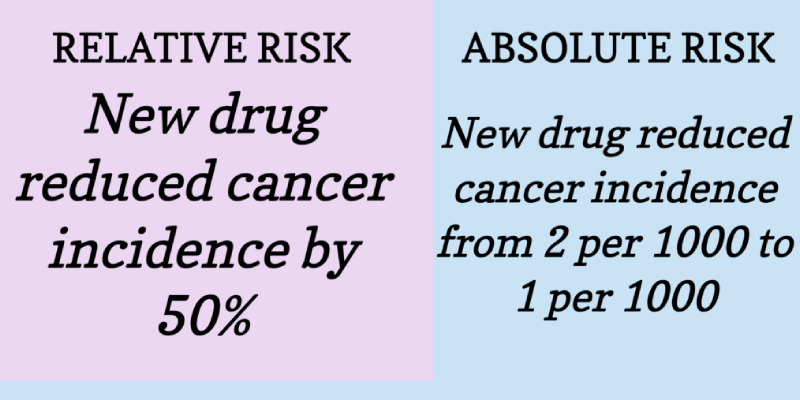
Turn on the television at just about any time of the day or night, and chances are pretty good that within the first 30 minutes, you will see a commercial promoting a drug. That’s because pharmaceuticals are big business, and the pharmaceutical companies know the best way to make money is to make sure consumers know what their drugs can do.
There’s nothing wrong with advertising in general; but problems can arise when the claims a company makes distort the truth without actually being out-and-out lies. Statistics are often used to skew messages in advertising and elsewhere. And while that practice can be misleading, when it comes to claims regarding medications, this practice can be downright dangerous.
Most drug commercials talk about risk in terms of how well their medications work to prevent whatever ailments they’re intended to treat. But drug makers usually talk about relative risks, often completely leaving out the absolute risks determined by clinical studies.
Absolute risk is your overall risk of developing a disease or condition over time as compared to everyone else. We all have absolute risks when it comes to developing common diseases like heart disease. We can say one out of 10 people will develop X disease in his or her lifetime, which is meaningful when it comes time to determine whether we want to have treatment or not.
Relative risk, on the other hand, compares the risks between two specific groups, often producing results and percentages that are skewed. That makes it difficult to make educated decisions about whether or not to take a medication, for instance, and it can also misstate the actual – or absolute – risks associated with taking a drug.
Understanding absolute and relative risks is also vitally important in legal cases determining negligence of drug manufacturers, and it’s one of the primary reasons why having a skilled attorney is critical in any negligence or medical malpractice case.
